
Museum of Oxford Project 2 /Skeleton and head of Giles Freeman Covington 1767-1791
Oxford 2011 ACDSee Pro 4 / Nikon D90
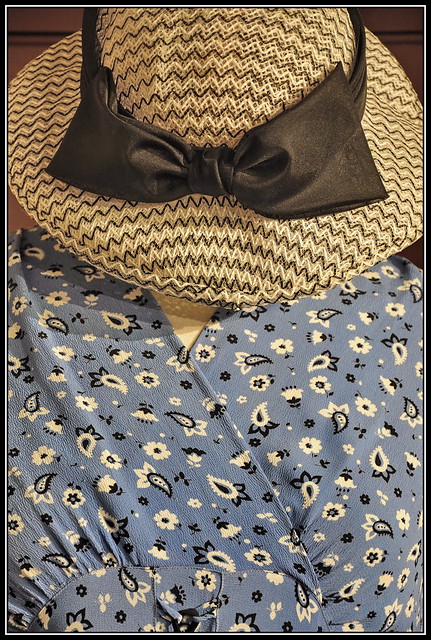
Museum of Oxford Project 5/ Detail of hat and dress print from
the Florence Park Housing Exhibit 1930s/ Oxford 2011.
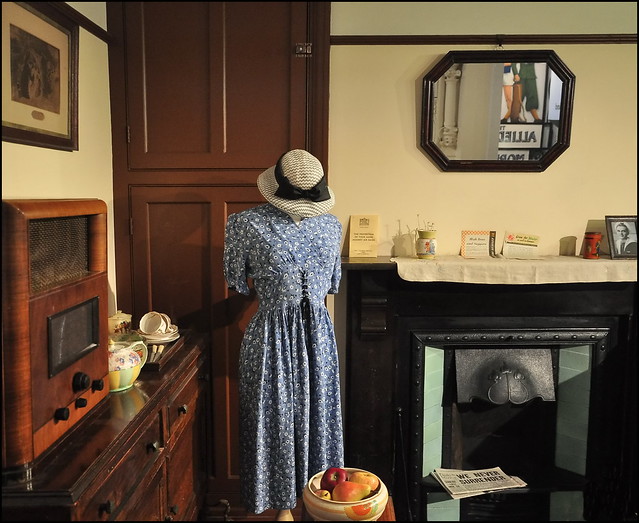
Museum of Oxford 1
Living room exhibit Florence Park Oxford 1930's
The Florence Park Estate in Cowley which housed about 600 people was built between 1934-1935 by F.E Moss, a speculative developer.The houses were rented mainly to young families who had moved from depressed areas such as South Wales and the North East: most men worked at Morris Motors,Pressed Steel and Osberton Radiators.
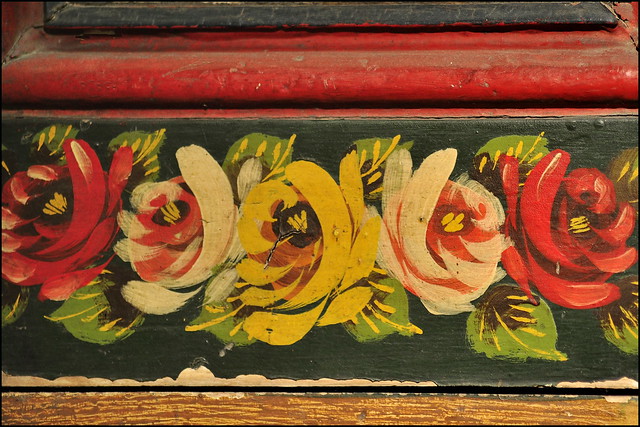
Museum of Oxford Project 4 / Detail from the Narrowboat Art Exhibit Oxford 2011.
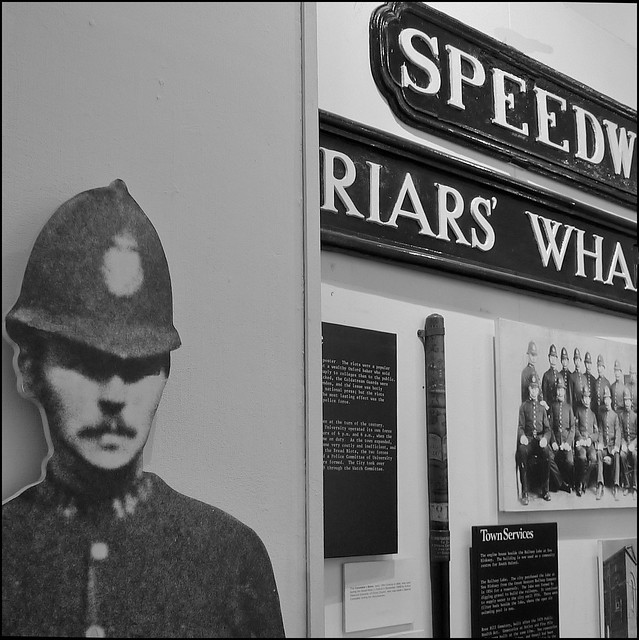
Museum of Oxford Project 8 / Town Services Exhibit with road signs for Speedwell St & Friars wharf / Oxford 2011
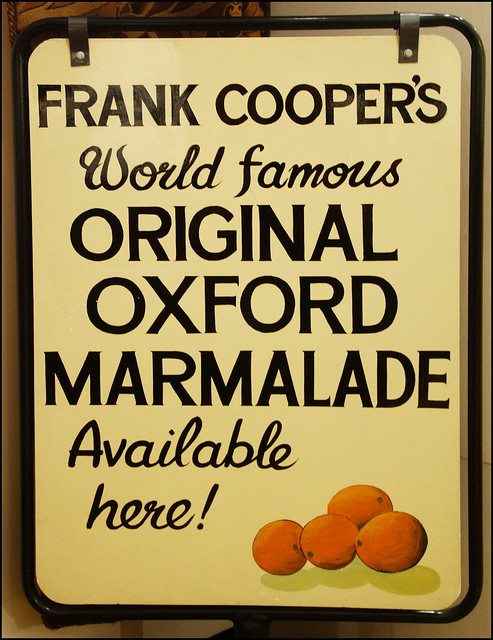
Museum of Oxford Project 3/ Original sign form the Oxford Marmalade factory
in Oxford.

Museum of Oxford Project 17 / Narrow Boat Art detail on jug
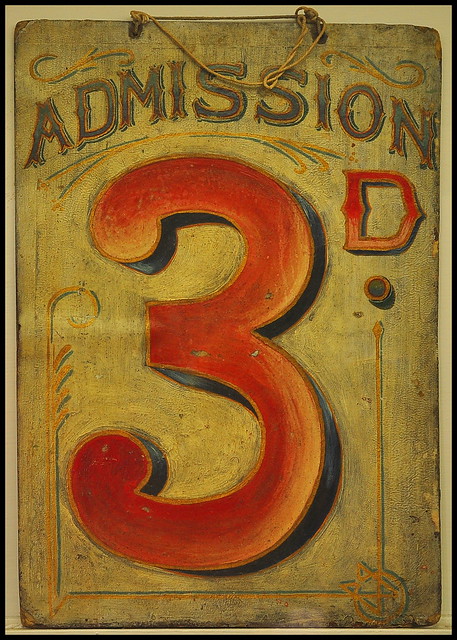
Museum of Oxford Project 16/ miniature enamel sign.
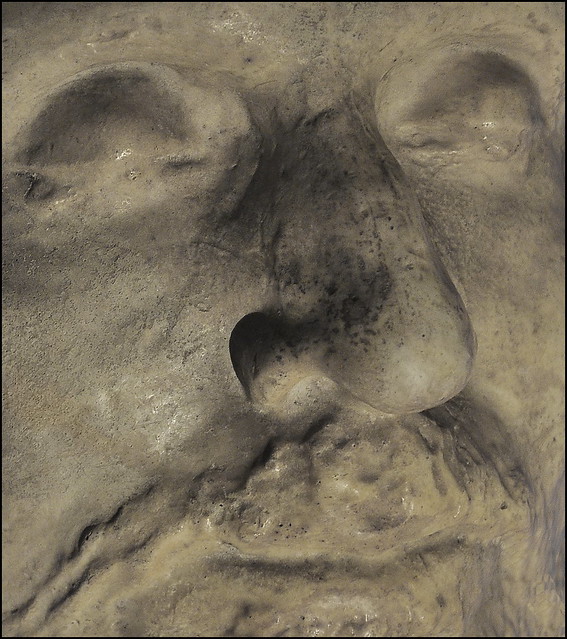
Museum of Oxford Project 10
Oliver Cromwell's death Mask. There are a few in existence taken from the original wax mask. This copy is in the Museum of Oxford at the far end of the lower floor in the Civil War gallery beneath a portrait of Charles i.He was buried in Westminster Abbey, but when the Royalists returned to power his corpse was dug up,hung in chains, and beheaded. His head was placed on a spike over Westminster Hall and remained there for 25 years. It was apparently blown down in a storm and was later found by a soldier who hid it for many years.In 1841 Cromwell's head was bought by Josiah Henry Wilkinson. Cromwell's head then stayed in the family until 1960, when it is given to Sidney Sussex College which was Oliver Cromwell's old college.After some debate the college decided to bury the head, in a secret place, so Cromwell could finally rest in peace. A plaque close to the burial site commemorates the interment of Oliver Cromwell's head on 25 March 1960.
Some extracts from- The Tale of Cromwell's head (tales of Curiosity..com)
talesofcuriosity.com/v/Cromwellshead/

Museum of Oxford Project 12
Front detail of a leather tunic or Buff Coat(reproduction) as worn by soldiers in the English Civil War. At one time it was thought that Civil War infantry wore coats of buff leather as additional protection but the expense of this item limited its use to officers and wealthier members of the London Trained Bands regiments and no contracts or warrants exist for mass supply of such an item to infantry.Often made from buffalo hide,it would have given some protection against a glancing blow from a sword but not a lot else.
Upper gallery Museum of Oxford 2011

Museum of Oxford Project 15 / Advertisement in a clock / Capes store exhibit.

Oxford Policemen at the turn of the century.
Until 1868 the University operated its own force between the hours of 6pm and 6am,when the City Police came on duty, As the town expanded,the system became very costly and inefficient,and in 1868,after the Bread Riots,the two forces were joined and the Police Committee of University and City members formed. The city took over control in 1889 through the watch committee.
Extracts from Town Sevices exhibit

Museum of Oxford Project 22 The Bread riots poster.
The riots were a popular protest against a wealthy Oxford baker who sold his bread more cheaply to colleges than to the public, The mayor panicked, the Coldstream Guards were called in from London,and the issue was hotly pursued in the Oxford press; but the riots were brief, The most lasting effect was the reform of the police force.
Town Services Exhibit Museum of Oxford 2011

Museum of Oxford Project 11
Detail from a 17th Century panel of Pargetting.
Lower gallery Museum of Oxford 2011
The panel is from over the door of a house in Kemp Hall Yard, The house was demolished in 1896 during the building of the present town hall. Pargetting is decorative moulded plaster work which was a popular form of cladding on timber framed buildings during the 17th century.
Nikon D90
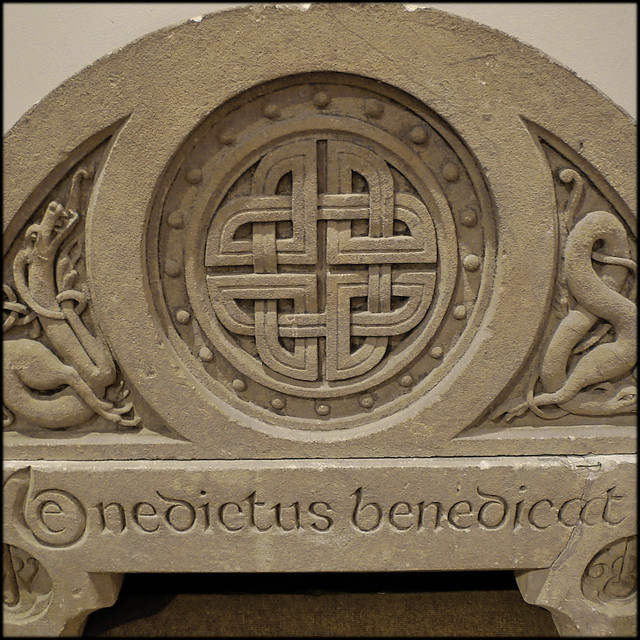
Museum of Oxford Project 7
Tympanum from a North Oxford house.
The House, now demolished,belonged to J,O Westwood, the entomologist of Woodstock and St Margaret s Roads.He planted Monkey Puzzle trees in the grounds to attract moths and was an expert in Celtic art. The de3sign of the tympanum,with its central boss and animal interlace reflects this interest and was probably designed by him. His initials J.O.W occur on the left hand support and the date,1864,on the right.
tym·pa·num
[tim-puh-nuhm] noun, plural -nums, -na [-nuh]
1.Anatomy, Zoology .a.middle ear .b.tympanic membrane.2.Architecture .a.the recessed, usually triangular space enclosed between the horizontal and sloping cornices of a pediment, often decorated with sculpture.b. a similar space between an arch and the horizontal head of a door or window below. 3. Electricity . the diaphragm of a telephone.4.a drum or similar instrument.5.the stretched membrane forming a drumhead.
Origin:
1610–20; < Latin < Greek týmpanon drum, akin to týptein to beat, strike

Museum of Oxford Project 16
Built in 1898 by Salter Brothers of Oxford,Keble barge was a late example of the type of craft used by the colleges as changing rooms for boat crews and for viewing the races during the eights week. Keble College barge continued in use until 1958,when it was declared unsound,and beached beside the Thames at Iffley Lock. The starboard stern section was salvaged by the Museum in 1973, and restored in the workshop
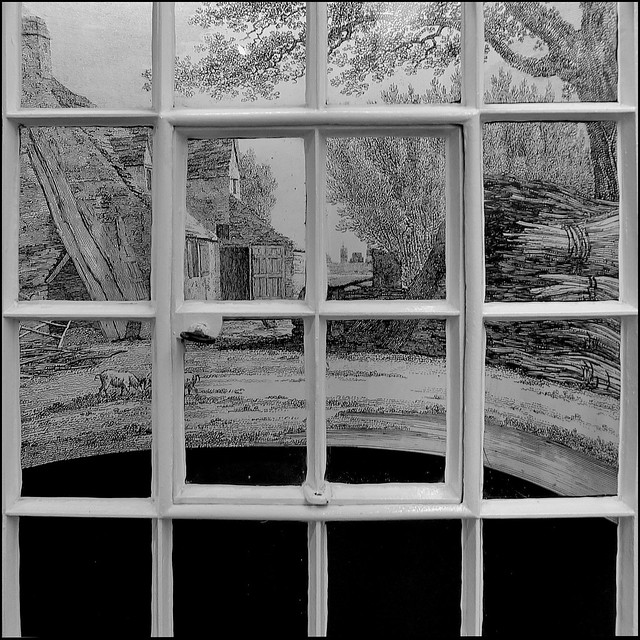
Museum of Oxford Project 14
Cast Iron Window from a canal warehouse at Hayfield Wharf.
The frame shape suggests that it dates fro the early 19th century.
The illustration behind the window is a view of Hayfield's Hut (and the Anchor Inn),Hayfield Road,in about 1789. The house was already a pub, nears the canal osler beds.
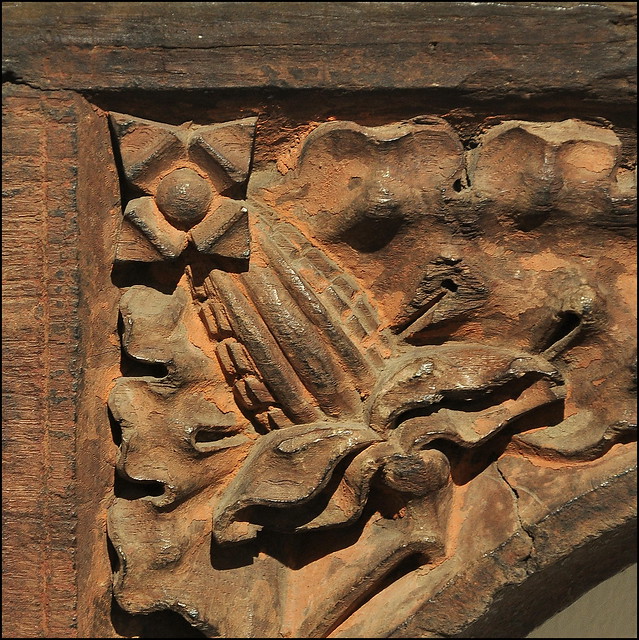
Museum of Oxford Project 19
128 The High St Moulded doorhead
This fragment of a decorated door head (spandrel) comes from a medieval house in the High Street,dating to about 1500. The Cornmarket shops each had a door and a shop window,and the doors were probably decorated in a similar manner, Note the red paint, a common feature of framed buildings:a corner post on a house (no.28) has traces of the same colour.
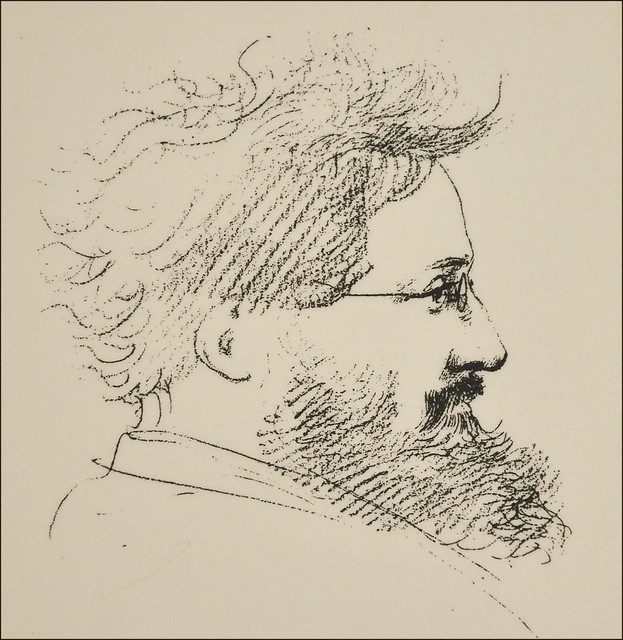
Museum of Oxford Project 23
Drawing in pencil of WIlliam Morris with the specticles he usually wore done by his friend, George Howard, Earl of Carlisle, Photographed from a print in the William Morris exhibit
Tullie House Museum Carlisle
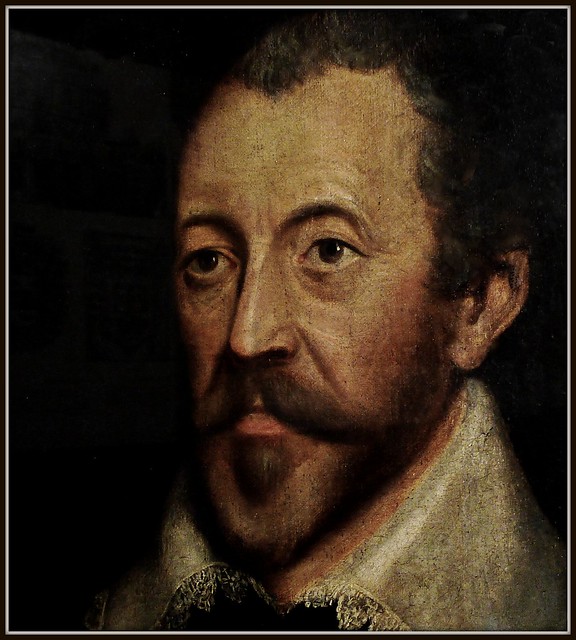
Museum of Oxford Project 21
Thomas Bodley
Thomas Bodley (1545–1613), a Fellow of Merton College who had travelled extensively in Europe and had between 1585 and 1596 carried out several diplomatic missions for Queen Elizabeth I. He married a rich widow whose husband had made a fortune from trading in pilchards and, in his retirement from public life, decided, in his own words, to ‘set up my staff at the library door in Oxon; being thoroughly persuaded, that in my solitude, and surcease from the Commonwealth affairs, I could not busy myself to better purpose, than by reducing that place (which then in every part lay ruined and waste) to the public use of students’.
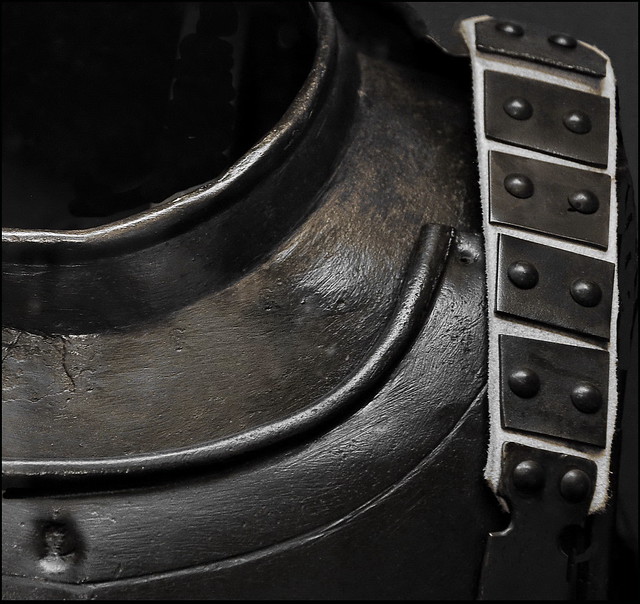
Museum of Oxford Project 24
English Civil War breast plate detail with dent from musket ball. On loan from the Tower of London.
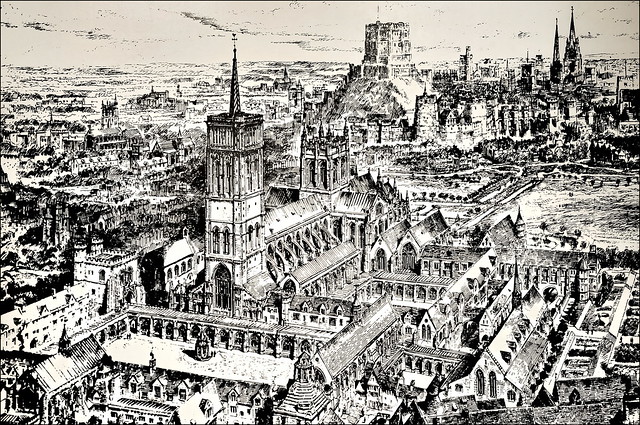
Museum of Oxford Project 18
Detail of artists impression of Osney Abbey and Oxford in Medievil times,from the west.By H W Brewer.
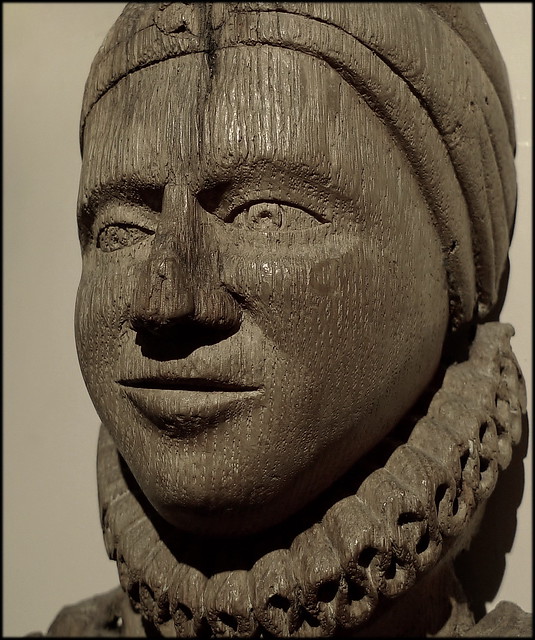
Museum of Oxford Project 20
One of a pair late 16th Century carved figures from a overmantel or fireplace surround. In the 18th century these were in Alderman Fletchers private museum.
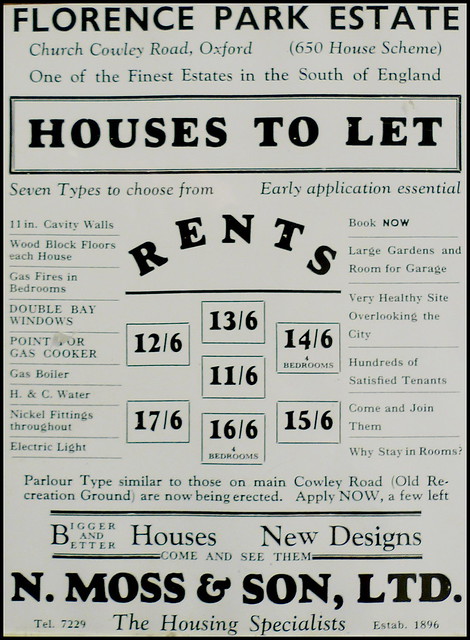
Museum of Oxford Project 13
Poster depicting rent prices/Florence Park Living room exhibit
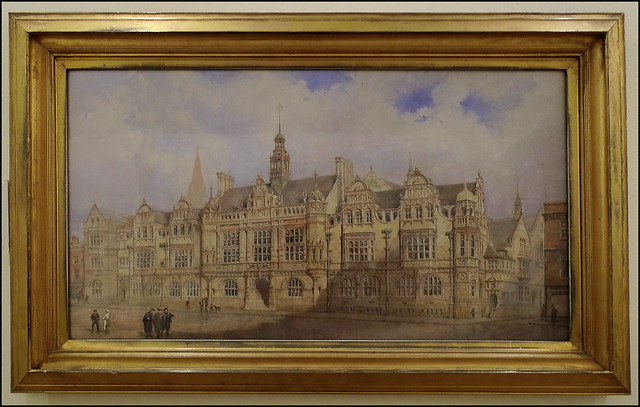
Museum of Oxford Project 23
Watercolour of the Town Hal, by H.T.Hare (Sadler Collection) Lent by Oxford City Council.
Wow Mike .... there are some amazing photographs there! Being a newbie to Oxford, I confess that I don't know the museum, but it looks well worth a visit - where is it? I shall have to pop along in the next week or two before it disappears somewhere else ;-)
ReplyDeleteHi Annie
ReplyDeletethanks for stopping by. Its next to the town hall in St Aldates and its open until 29th October 2011. If you hurry you may catch my exhibition on stained glass details, Its worth a visit and there are some k=things for kids to do too!!
cheers
mike